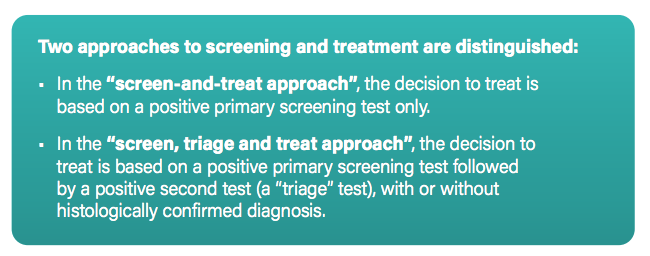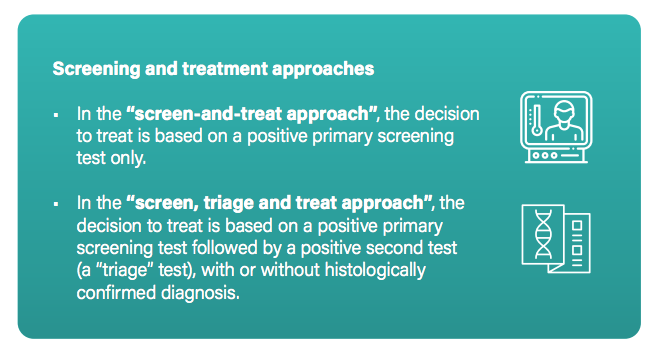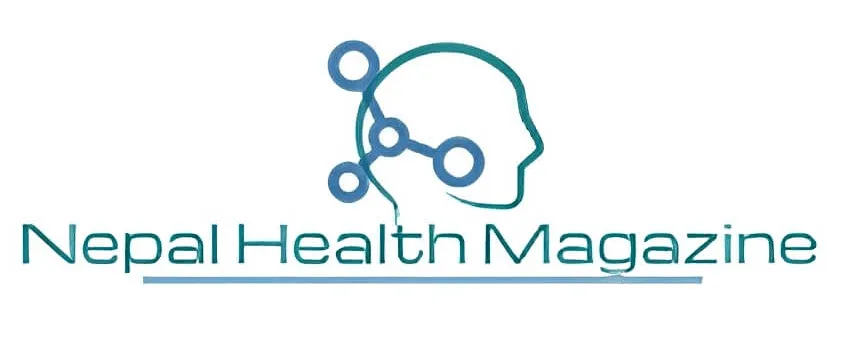WHO guideline for screening and treatment of cervical pre-cancer lesions for cervical cancer prevention, second edition: use of mRNA tests for human papillomavirus (HPV): Cervical cancer is a leading cause of mortality among women. In 2020, an estimated 604 000 women were diagnosed with cervical cancer worldwide and about 342 000 women died from the disease. Cervical cancer is the most commonly diagnosed cancer in 23 countries and is the leading cause of cancer death in 36 countries. The vast majority of these countries are in sub-Saharan Africa, Melanesia, South America and South-Eastern Asia.

Human papillomavirus (HPV) E6/E7 messenger RNA detection (mRNA) is an alternative method to HPV DNA tests for HPV detection. The mRNA technologies involve detection of mRNA of E6/ E7 oncoproteins that are responsible for HPV-mediated oncogenic transformation of epithelial cells. HPV E6/E7 mRNA detection could be more specific than detection of the viral HPV DNA because HPV mRNA tests correlate with actual virus replication, which is further down the HPV pathway toward development of pre-cancer changes. Most HPV DNA tests target the 13–14 most oncogenic HPV types. The HPV mRNA tests vary; one test targets all 14 of the most oncogenic types, while others target fewer oncogenic types

For both the general population of women and women living with HIV, although cross-sectional data were available for the general population of women, and were used to inform the evidence on HPV mRNA tests presented in this guideline, the GDG noted that more longitudinal data on the impact of HPV mRNA tests in screening programmes are needed. This includes follow-up and assessment of outcomes beyond five years in women who have been screened using HPV mRNA testing. More studies are also needed on the test outcomes, with comparison between self-sampling and provider-collected samples, because it is important for programmes to provide more options for screening and treatment. In addition, there is an urgent need for different assays to be validated, using each of the specific transport media. There is currently a complete absence of data on the use of HPV mRNA tests among women living with HIV. With the need for more frequent screening in women living with HIV due to higher rates of recurrence of cervical pre-cancer lesions, screening tests with higher specificity like HPV mRNA tests could have the additional benefits of decreasing the number of cervical cancer treatments needed in a screen-and-treat approach and lowering costs. Therefore, trials comparing the screen-and-treat approach with the screen, triage and treat approach using HPV mRNA testing for primary screening are important to further understanding of these dynamics and of HPV mRNA test performance among women living with HIV – particularly in low- and middle-income settings where diagnostic and treatment capacities may be different from high-income settings. Comparative longitudinal studies comparing HPV mRNA and HPV DNA screening tests are needed, particularly those that will enable calculation of test performance (sensitivity, specificity, positive predictive value, negative predictive value) against a reference standard of histological confirmation. Furthermore, longitudinal studies that assess outcomes among women living with HIV over longer periods of time, including with different screening intervals and collection techniques, will be important to ascertain the long-term benefits and risks of different screening tests and strategies.
- Webinar on World Hand Hygiene | Register today
- World’s First 5-in-1 vaccine against meningitis | Men5CV
- World Health Worker Week 2024 | Know theme
- World Autism Awareness Day 2024 | Know theme
- Staff Nurse | OCH | latest jobs vacancy 2024
- World Hepatitis Summit 2024 | WHO
- Staff Nurse | TLMN | ngo jobs 2024
- World Health Day 2024 | Know theme
- Measuring access to assistive technology in Nepal | Country Report
- Migration Health Nurse | IOM | ingo jobs
- Nursing Officer | Kopila Valley | nursing jobs 2024
- Benefits and risks of using artificial intelligence for pharmaceutical development and delivery | WHO
bachelor jobs bph jobs covid19 health health for all health guidelines new health jobs healthjobs healthjobs in nepal health jobs vacancy health public health update ingo jobs jobs after passing bachelor jobs for bph jobs in nepal jobs in ngo ngo jobs ngo jobs vacancy ngo jobs vacancy for bph ngo job vacancy 2021 nurse jobs nurse jobs 2021 nurse vacancy nursing insurance nursing job nursing jobs nursing jobs 2021 nursing jobs in nepal nursing law nursing officer Nursing Vacancy Public health Public health concern public health important days Public health in Nepal publichealth jobs public health updated Staff Nurse Staff Nurse and HA Vacancy | Nepal Army 2021 staff nurse vacancy staff nurse vacancy in ngo 2021 nepal staff nurse vacancy kathmandu who guidelines WHO official

Hey there, I am Nirdesh Baral, founder of Nepal Health Magazine. I am a Tech geek by passion , Public health practitioner by profession and an Ailurophile by heart and a patriot by birth



